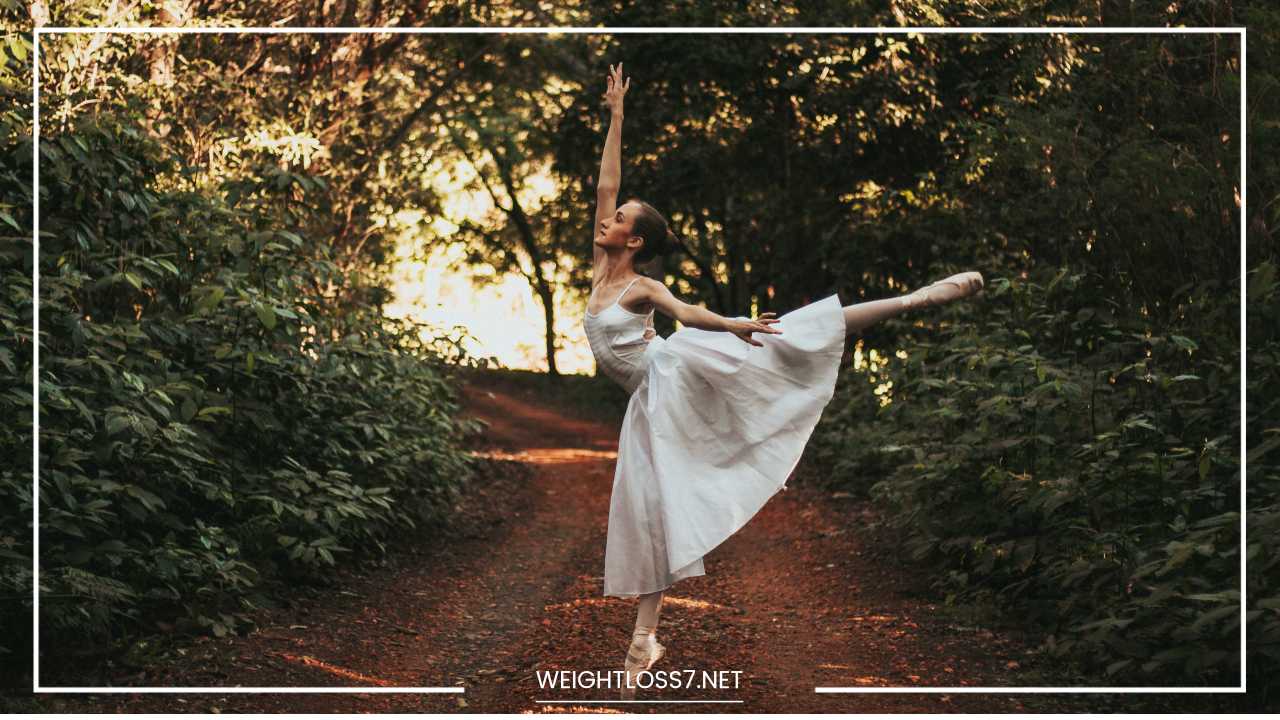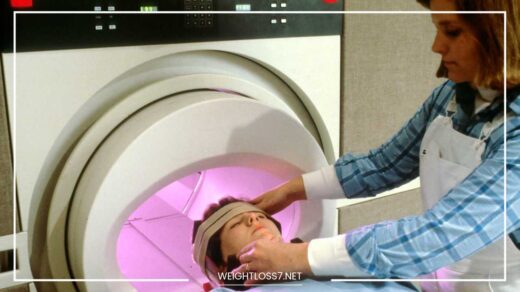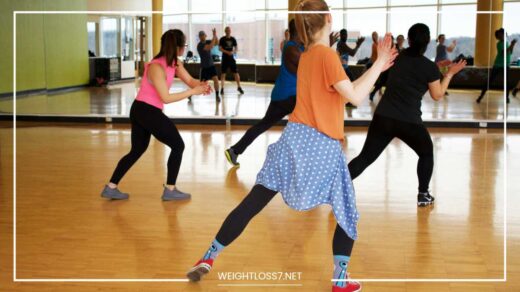Ballerina’s Guide to Health & Wellbeing

Ballerina’s
Beyond the Tutus: A Ballerina’s Guide to Health and Wellbeing
The image of a ballerina is synonymous with elegance, grace, and seemingly effortless movement. Their artistry unfolds on stage, captivating audiences with breathtaking leaps, pirouettes, and extensions.
However, the captivating world of ballet hides a demanding reality.
Behind the ethereal beauty of tutus and pointe shoes lies a life dedicated to rigorous training, meticulous discipline, and an unwavering commitment to health and well-being.
This blog post delves into the world of a ballerina, exploring the intricate relationship between their physical prowess and the essential pillars of health that fuel their incredible talent.
We’ll explore not just the world of nutrition and training, but also delve into injury prevention strategies and the often-overlooked realm of mental well-being.
Whether you’re an aspiring ballerina, a seasoned dancer, or simply someone seeking to optimize your health for a demanding physical pursuit, this guide offers valuable insights.
Fueling the Engine: A Dancer’s Diet
Ballet demands a high level of energy and stamina. Long rehearsals and demanding performances require dancers to be finely tuned machines, capable of explosive bursts of power and sustained control.
However, the misconception that dancers need to be thin for optimal performance persists. Not only is this unhealthy, but it’s also untrue.
A balanced and well-rounded diet is the cornerstone of a ballerina’s health, providing the necessary fuel for building and maintaining muscle strength, promoting flexibility, and aiding in recovery.
Here’s a deeper look at key dietary considerations for ballerinas:
-
Macronutrients: The Building Blocks of Performance: A dancer’s diet should prioritize a balanced intake of macronutrients – carbohydrates, protein, and healthy fats. Complex carbohydrates, found in whole grains, fruits, and vegetables, provide sustained energy throughout long rehearsals. These complex carbohydrates release glucose slowly into the bloodstream, preventing energy crashes and maintaining focus. Lean protein sources like chicken, fish, legumes, and tofu are essential for building and repairing muscle tissue, crucial for dancers to maintain strength and power. Healthy fats from nuts, seeds, and avocados play a vital role in nutrient absorption, cell function, and hormone regulation. They also contribute to satiety, helping dancers feel fuller for longer, reducing cravings and unhealthy snacking.
-
Micronutrients: The Unsung Heroes: While macronutrients provide the fuel, micronutrients like vitamins and minerals act as the spark plugs, ensuring the engine runs smoothly. Calcium is vital for strong bones, which can withstand the impact of jumps and landings. Iron is essential for oxygen transport, crucial for delivering oxygen to muscles for energy production. Vitamin D aids in calcium absorption and maintains bone health. Including a variety of colorful fruits and vegetables in the diet ensures a good intake of these essential micronutrients.
-
Hydration: The Elixir of Life: Dancers lose a significant amount of fluids through sweat during intense training sessions. Staying hydrated is crucial for regulating body temperature, lubricating joints, and preventing muscle cramps. Aim for consistent water intake throughout the day, increasing it during rehearsals and performances. Consider adding a pinch of salt to your water, especially on hot days, to replenish electrolytes lost through sweat.
-
Portion Control and Individual Needs: While calorie restriction is not recommended for dancers who require substantial energy for training, portion control is important. Dancers need enough fuel to power through intense training, but overeating can lead to sluggishness and discomfort. Consulting a registered dietitian specializing in sports nutrition can be invaluable. They can create a personalized plan that meets the individual needs of each dancer, considering factors like age, training intensity, and body composition.
Building Strength and Stamina: The Art of Training
Ballet training is a rigorous art form that combines strength, flexibility, and cardiovascular conditioning. Here, we’ll explore some key aspects for a healthy and sustainable ballet practice:
-
Warming Up and Cooling Down: Preparing for Battle: Proper warm-up routines are the first line of defense in preventing injuries. They prepare the body for movement by increasing blood flow to muscles, improving range of motion, and priming the nervous system. Dynamic stretches, light cardio like jumping jacks or jogs in place, and isolated muscle activations are essential components of a good warm-up. Similarly, a cool-down routine with static stretches helps to improve flexibility, prevent muscle soreness, and gradually lower the heart rate.
-
Building a Strong Foundation: The Importance of Strength Training: Many people mistakenly believe that ballet is all about flexibility, but strength is equally important. Building strong muscles around joints provides stability and reduces the risk of sprains and strains. Focus on exercises that target core muscles, legs, and feet, especially those that mimic ballet movements. Exercises like squats, lunges, planks, and calf raises are great starting points. Consider working with a strength and conditioning coach who can create a program tailored to your specific needs and ballet goals. Don’t be afraid to use lighter weights for higher repetitions to build muscle endurance, a crucial quality for dancers.
-
The Art of Flexibility: Finding the Balance: Flexibility is a hallmark of ballet, allowing for graceful extensions and achieving challenging poses. However, overemphasizing flexibility can lead to instability and injuries. Static stretches should be held for at least 30 seconds after a proper warm-up to improve flexibility safely. Consider incorporating yoga or Pilates into your training routine for a well-rounded approach to flexibility.
-
Cross-Training: Embracing Different Disciplines: Including activities like swimming, Pilates, or yoga in your training regimen can complement ballet training in several ways. Swimming is a low-impact exercise that builds cardiovascular endurance without putting stress on joints. Pilates strengthens core muscles, improves posture, and enhances body awareness, all essential for ballet. Yoga can improve flexibility and mindfulness, both valuable assets for dancers.
-
Fueling Your Recovery: The Power of Rest and Recovery: Just as important as rigorous training is allowing your body adequate time to recover. Schedule rest days throughout the week to allow your muscles to repair and rebuild. Active recovery practices like light cardio or gentle yoga can help flush out lactic acid and promote faster recovery. Prioritize quality sleep – aim for 7-8 hours per night – for optimal physical and mental restoration.
-
Listening to Your Body: Respecting Your Limits: Pushing through pain can lead to serious injuries that can sideline you for a long time. Dancers need to be in tune with their bodies and identify their limitations. Don’t hesitate to take a break or modify exercises if you experience pain. Communicate any discomfort to your teacher for modifications or alternative exercises that achieve similar goals without compromising your well-being.
Protecting the Temple: Injury Prevention for Ballerinas
The demands of ballet can put a significant strain on the body, making injury prevention a top priority. Here are some essential practices to minimize the risk of injuries:
-
Proper Technique: The Foundation for Safety: Working with a qualified ballet teacher who emphasizes proper technique is vital. Correct alignment and execution of movements minimize stress on joints and muscles. A good teacher will provide individualized feedback and corrections to ensure you’re performing exercises safely and effectively.
-
Foot Care: Pointe Shoe Perfection: Pointe work is a demanding aspect of ballet, requiring specialized footwear and meticulous attention to detail. Properly fitted pointe shoes are crucial for preventing blisters, bunions, and stress fractures. Seek guidance from a qualified pointe shoe fitter who can assess your feet and recommend the right shoes for your foot shape and level of experience. Learn proper pointe shoe care techniques, including breaking them in slowly and maintaining shank strength.
-
Maintaining Strong Bones: Dancers, especially young ballerinas, are at an increased risk for developing stress fractures due to the repetitive impact of jumps and landings. Including weight-bearing exercises like walking, running, or dance styles that involve jumping in your training routine can help strengthen bones. Ensure adequate calcium intake through dietary sources like dairy products or consider calcium supplements after consulting with a doctor or registered dietitian.
-
Posture Awareness: Maintaining good posture, not just during ballet practice but throughout the day, is crucial for preventing injuries and promoting overall well-being. Focus on keeping your shoulders down and back straight, engaging your core muscles, and aligning your head over your spine. A physical therapist can help assess your posture and recommend exercises to improve any imbalances.
Nurturing the Mind: Mental Wellbeing for Dancers
The mental demands of ballet are often overlooked. Dancers face pressure to perform flawlessly, contend with the competitive nature of the field, and may struggle with body image issues. Here are ways to support mental well-being:
-
Positive Self-Talk: Building Confidence: The inner critic can be a dancer’s worst enemy. Challenge negative thoughts and replace them with positive affirmations. Focus on your strengths and accomplishments. Visualize yourself performing successfully to boost confidence and mental focus.
-
Developing Resilience: Setbacks and failures are inevitable parts of any dancer’s journey. Learn to bounce back from disappointments and use them as opportunities for growth. Develop coping mechanisms for dealing with stress and anxiety, such as relaxation techniques like deep breathing or meditation.
-
Building a Support System: Surrounding yourself with positive and supportive friends, family members, and mentors can make a significant difference in mental well-being. Having a network of people who believe in you and celebrate your successes can be a source of strength and encouragement.
-
Seeking Professional Help: Don’t be afraid to seek professional help from a therapist if you’re struggling with anxiety, depression, or negative body image. A therapist can provide valuable tools and strategies to manage these challenges and promote emotional well-being.
Beyond the Stage: A Life of Balance
The life of a ballerina is a demanding one. However, by prioritizing a holistic approach to health that encompasses physical training, nutrition, injury prevention, and mental well-being, dancers can create a sustainable and fulfilling career. Remember, a healthy dancer is a happy dancer. Here are some additional tips for a balanced life:
-
Finding Joy in Movement: Ballet should be a source of joy and artistic expression. Don’t let the pressure to perform overshadow the intrinsic rewards of dance. Focus on the beauty of movement, the satisfaction of mastering new skills, and the connection between your body and mind.
-
Embracing Other Activities: While ballet is likely your passion, make time for hobbies and activities outside the dance studio. This could include anything from reading and spending time with loved ones to pursuing other creative outlets. Having a well-rounded life will help prevent burnout and contribute to overall well-being.
-
Giving Back to the Community: Sharing your passion for ballet with others can be a rewarding experience. Consider volunteering at a dance school or mentoring younger dancers. Giving back to the community can foster a sense of purpose and connection.
-
Celebrating Your Achievements: Take the time to acknowledge your progress and accomplishments, big or small. This could be anything from landing a challenging jump for the first time to booking a coveted role in a performance. Celebrating your successes will boost your confidence and motivation to keep striving for your goals.
The Final Leap: A Lifelong Journey
The world of ballet is a beautiful and demanding pursuit. By prioritizing health and well-being, dancers can navigate the challenges and cultivate a long and successful career.
This journey extends beyond the stage, shaping a life of discipline, resilience, and artistry. Whether you’re a seasoned ballerina or just starting your journey, remember, taking care of your mind and body is the foundation for achieving your artistic dreams and living a life filled with grace and fulfillment.

















